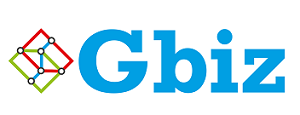Bias, no matter, whether it’s conscious or unconscious can have a great impact on individual growth, hamper teamwork, and eventually lead to an unhealthy, toxic, and unproductive workplace. According to Richard Ghilarducci, it is high time for businesses to recognize the crucially of addressing as well as eliminating the stigma of bias in their workplaces to foster fairness, inclusivity, and equality.
The personality considers that to lessen bias in the workplace, a comprehensive approach involving education, awareness building, and also to stay committed to creating an inclusive and bias-free workplace is the key. In this article, readers will explore how involvement of leadership is vital to preventing a workplace from bias.
Role of Leadership to Stop Bias in the Workplace
Involvement in leadership is the key to promoting the efforts to diminish bias and unfairness in the workplace. By recognizing the necessity of eliminating workplace bias, the management and leaders need to take proactive steps to ensure a bias-free work culture to prevent and promote fairness and inclusivity.
Why is Leadership Involvement Important to Reduce Workplace Bias?
As per Richard Ghilarducci, the involvement of leaders is paramount in making workplaces free from bias. The proactive role of leaders conveys a powerful message to the entire workforce that under no circumstances, bias will be tolerated. It equally makes everyone accountable for welcoming an inclusive work culture.
Leaders need to set examples by demonstrating unbiased behavior in all their decisions and actions which become influential to others in the workplace. By promoting a culture of diversity and inclusivity, leaders can set a foundation for lessening bias at every level of an organization.
- Leadership Development Programs
According to Richard Ghilarducci, to combat bias effectively, businesses need to provide leadership development programs that are especially designed or focus on bias awareness. These programs should make leaders knowledgeable with skills and insight to recognize as well as fight back against their biases that take place in different manners. Such training sessions should focus on topics like unconscious or implicit bias and the impact of unconscious bias on decision-making.
- Equipping Leaders with Tools for Inclusive Decision-Making
Inclusivity in decision-making is an essential part of stopping workplace-related bias. It is the role of management to let the leaders get fitted with tools and strategies that help promote inclusivity while reducing unconscious or conscious bias in different decision-making processes. By seeking valued insights and guidance from professionals related to different sectors, backgrounds, and experiences, managers in leadership positions can make informed decisions to be less influenced by unconscious biases.
- Continuing Evaluation and Responsibility
Leadership training to eliminate workplace bias needs to be a continuing process instead of a one-time event. Richard Ghilarducci recommends organizations establish needed mechanisms to evaluate the effectiveness of leadership developing programs regularly to evaluate the progress of leaders in lessening workplace bias.
Organizing mentorship and coaching can be a great way to support leaders in improving their awareness level and understanding how unconscious bias occurs and how to avoid decision-making that leads to treating employees unfairly from others. In addition, leaders will be held responsible for their decisions and actions to ensure that they consistently uphold the commitment of the organization to fairness, inclusivity, and equality.
